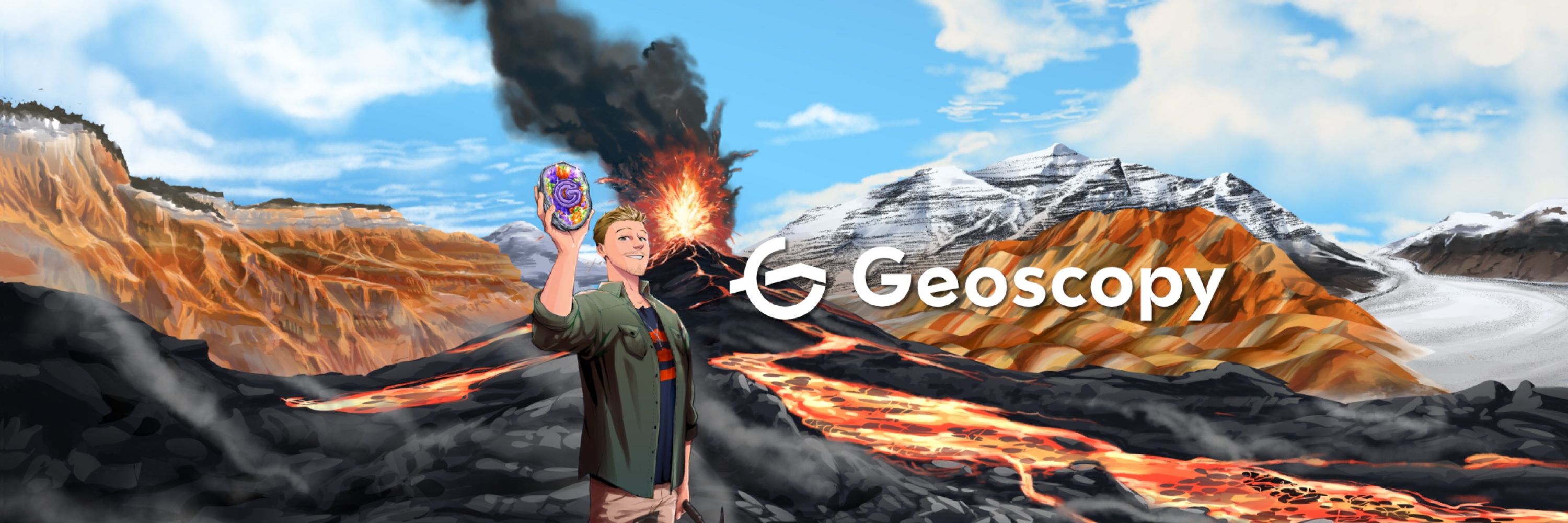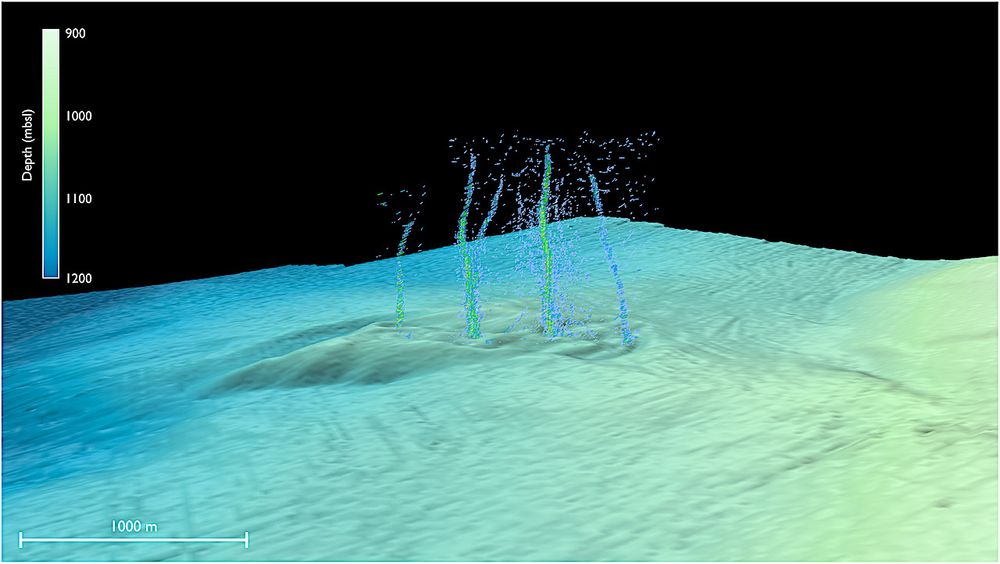
Geoscopy — Geology Explained
@geoscopy.bsky.social
I unveil Earth’s hidden stories through visual-rich, science-driven narratives. From tectonic shifts to ancient fossils, discover geology as dynamic, accessible, and awe-inspiring. Empower your understanding. Know your Earth. Go on geoscopy.com for more
🔥 Recent thrill: Episode 35 (Oct 17–18) was jaw-dropping. Two vents in Halemaʻumaʻu Crater unleashed lava fountains ~1,500 ft and ~1,100 ft high – higher than a skyscraper! It was the highest twin fountain event of this eruption so far.

October 25, 2025 at 3:17 PM
🔥 Recent thrill: Episode 35 (Oct 17–18) was jaw-dropping. Two vents in Halemaʻumaʻu Crater unleashed lava fountains ~1,500 ft and ~1,100 ft high – higher than a skyscraper! It was the highest twin fountain event of this eruption so far.
⏳ How it works: Magma pressure builds for days, then suddenly boom – a lava fountain bursts out, then pauses. The volcano’s summit inflates (swells) between bursts and deflates when lava erupts
October 25, 2025 at 3:17 PM
⏳ How it works: Magma pressure builds for days, then suddenly boom – a lava fountain bursts out, then pauses. The volcano’s summit inflates (swells) between bursts and deflates when lava erupts
Fluids can rewrite chemistry (metasomatism). Picture a French dip: juices move through and change flavor without turning the sandwich to soup. Classic result at magma–limestone boundaries: skarn.

October 24, 2025 at 5:27 PM
Fluids can rewrite chemistry (metasomatism). Picture a French dip: juices move through and change flavor without turning the sandwich to soup. Classic result at magma–limestone boundaries: skarn.
Metamorphic is the panini. Take an existing rock, heat it, squeeze it, move fluids through it—but don’t melt it. Minerals recrystallize, align, or swap elements. Same ingredients, new texture and strength.

October 24, 2025 at 5:27 PM
Metamorphic is the panini. Take an existing rock, heat it, squeeze it, move fluids through it—but don’t melt it. Minerals recrystallize, align, or swap elements. Same ingredients, new texture and strength.
Bread matters: open, airy crumb (ciabatta) is like high‑porosity sandstone—fluids can move. Dense rye is shale—good seal, lousy flow. That’s aquifers and reservoirs in lunch form.

October 24, 2025 at 5:27 PM
Bread matters: open, airy crumb (ciabatta) is like high‑porosity sandstone—fluids can move. Dense rye is shale—good seal, lousy flow. That’s aquifers and reservoirs in lunch form.
Grain size tracks energy:
• Sandstone: beach/river bar—like a well‑sorted turkey sub.
• Shale: quiet water mud—more like a smooth hummus wrap.
• Conglomerate: debris flow—think a Sloppy Joe with everything.
• Sandstone: beach/river bar—like a well‑sorted turkey sub.
• Shale: quiet water mud—more like a smooth hummus wrap.
• Conglomerate: debris flow—think a Sloppy Joe with everything.

October 24, 2025 at 5:26 PM
Grain size tracks energy:
• Sandstone: beach/river bar—like a well‑sorted turkey sub.
• Shale: quiet water mud—more like a smooth hummus wrap.
• Conglomerate: debris flow—think a Sloppy Joe with everything.
• Sandstone: beach/river bar—like a well‑sorted turkey sub.
• Shale: quiet water mud—more like a smooth hummus wrap.
• Conglomerate: debris flow—think a Sloppy Joe with everything.
Texture tells the story. Big rounded chunks → conglomerate (imagine meatballs in a roll: high‑energy river moved them far). Angular chunks → breccia (more like chopped croutons dumped in—short, sudden drop).

October 24, 2025 at 5:26 PM
Texture tells the story. Big rounded chunks → conglomerate (imagine meatballs in a roll: high‑energy river moved them far). Angular chunks → breccia (more like chopped croutons dumped in—short, sudden drop).
Start with sedimentary—the deli sub. Bits of older rock, shells, or crystals settle out of water or air, get compacted, then “glued” by minerals like calcite or silica. That glue is the mayo/cheese that sets.

October 24, 2025 at 5:25 PM
Start with sedimentary—the deli sub. Bits of older rock, shells, or crystals settle out of water or air, get compacted, then “glued” by minerals like calcite or silica. That glue is the mayo/cheese that sets.
I love the name: Pythia was the oracle at Delphi, perched above a crack in the Earth breathing strange gases to “see” the future. Here, a literal crack is venting fluid that helps us see the state of a dangerous fault. Perfect.

October 21, 2025 at 5:30 AM
I love the name: Pythia was the oracle at Delphi, perched above a crack in the Earth breathing strange gases to “see” the future. Here, a literal crack is venting fluid that helps us see the state of a dangerous fault. Perfect.
The site is unlike any seep described on active margins: warm, high‑flux, water‑dominated, not methane‑dominated. Its chemistry + temperature point to fluids percolating up through fault‑controlled pathways—basically the fault exhaling.

October 21, 2025 at 5:30 AM
The site is unlike any seep described on active margins: warm, high‑flux, water‑dominated, not methane‑dominated. Its chemistry + temperature point to fluids percolating up through fault‑controlled pathways—basically the fault exhaling.
Translation: if the fault bleeds out its lubricant, parts of Cascadia can clamp down more tightly. Locked patches are the ones that snap in great earthquakes. The discovery gives us a direct window into that hidden pressure system.

October 21, 2025 at 5:30 AM
Translation: if the fault bleeds out its lubricant, parts of Cascadia can clamp down more tightly. Locked patches are the ones that snap in great earthquakes. The discovery gives us a direct window into that hidden pressure system.
Why this matters: fluids at a megathrust aren’t just “wet.” They control friction. High fluid pressure can help plates creep; losing fluid can let the fault lock harder, storing more strain for a bigger quake later.

October 21, 2025 at 5:29 AM
Why this matters: fluids at a megathrust aren’t just “wet.” They control friction. High fluid pressure can help plates creep; losing fluid can let the fault lock harder, storing more strain for a bigger quake later.
The water is ~9 °C warmer than the surrounding ocean and laced with elements (boron, lithium, etc.) that scream “deep origin.” Best evidence says it’s coming from ~4 km (~2.5 mi) below the seafloor—the actual plate boundary zone. That’s… wild.

October 21, 2025 at 5:28 AM
The water is ~9 °C warmer than the surrounding ocean and laced with elements (boron, lithium, etc.) that scream “deep origin.” Best evidence says it’s coming from ~4 km (~2.5 mi) below the seafloor—the actual plate boundary zone. That’s… wild.
Where? ~50 miles off Newport, Oregon. A research ship spotted weird bubble plumes on sonar during a weather delay, sent down a robot, and found water jetting from the seafloor. Not a typical hydrothermal vent; the fluid chemistry is totally different.

October 21, 2025 at 5:28 AM
Where? ~50 miles off Newport, Oregon. A research ship spotted weird bubble plumes on sonar during a weather delay, sent down a robot, and found water jetting from the seafloor. Not a typical hydrothermal vent; the fluid chemistry is totally different.
Just how “cool” is ~510 °C lava? It’s still dangerous – extremely hot – but not the instant incineration of 1100 °C lava. In fact, in 2007 a guide fell into an active lava flow at Ol Doinyo Lengai and managed to climb out and survive (with serious burns to his legs).

October 19, 2025 at 4:37 PM
Just how “cool” is ~510 °C lava? It’s still dangerous – extremely hot – but not the instant incineration of 1100 °C lava. In fact, in 2007 a guide fell into an active lava flow at Ol Doinyo Lengai and managed to climb out and survive (with serious burns to his legs).
But wait what happens after. Fresh flows are dark brown/black, but within days or even hours they turn white like snow! The lava’s sodium- and potassium-carbonate minerals rapidly react with moisture in the air (or rain), forming a white coating of natron/trona (basically soda ash) as it cools.

October 19, 2025 at 4:37 PM
But wait what happens after. Fresh flows are dark brown/black, but within days or even hours they turn white like snow! The lava’s sodium- and potassium-carbonate minerals rapidly react with moisture in the air (or rain), forming a white coating of natron/trona (basically soda ash) as it cools.

